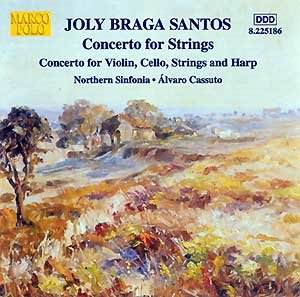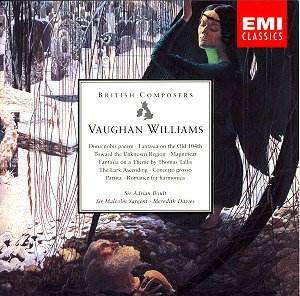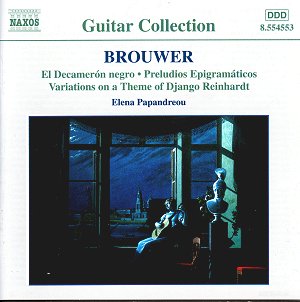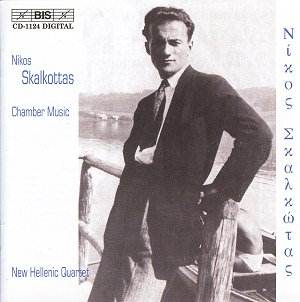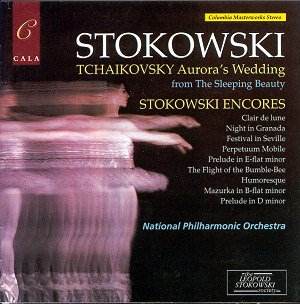 Composer: Leopold Stokowski
Composer: Leopold Stokowski
Works: Aurora’s Wedding (from The Sleeping Beauty), Clair de lune, Night in Granada, Festival in Seville, Perpetuum Mobile, Prelude in E Flat minor, The Flight of the Bumble-Bee, Mazurka in B flat minor, Prelude in D minor
Performers: National Philharmonic Orchestra, conducted by Leopold Stokowski
Recording: West Ham Central Mission, London, May and July 1976
Label: CALA CACD 0529
Leopold Stokowski, a titan of orchestral color and a masterful transcriber, remains an enigmatic figure in the annals of classical music. His affinity for the ballet repertoire is well-documented, and this collection of encores showcases his deft approach to orchestrating beloved works. The recordings, made in the twilight of his long career, reveal not only his unyielding passion for music but also his uncanny ability to breathe new life into existing compositions. The varied selection—from Tchaikovsky to Chopin—serves as an eloquent testament to Stokowski’s interpretive artistry and his unparalleled skill in the orchestral arena.
The ballet sequence, “Aurora’s Wedding,” edited by Serge Diaghilev, stands as a highlight of this recording. Stokowski’s interpretation is imbued with a sense of fluidity, deftly navigating the lush textures and rhythmic subtleties of Tchaikovsky’s score. The National Philharmonic Orchestra, assembled with notable virtuosity, responds with a sonorous blend that is both rich and nuanced. The violins sparkle under Stokowski’s direction, particularly in the ethereal moments where the orchestral fabric is allowed to breathe, giving rise to a palpable tension and release that is characteristic of his best work. This version of “Aurora’s Wedding” could be considered the definitive recording, as it encapsulates the spirit of the ballet while enhancing its emotional depth through Stokowski’s sensitive conducting.
In the realm of orchestration, Stokowski’s transcription of Debussy’s “Clair de lune” is nothing short of revelatory. The introduction of harp arpeggios and vibraphone lends a delicate, shimmering quality that captures the essence of the original piano score while expanding its sonic palette. The clarity at 2:17, where the first violins weave through the texture, exemplifies Stokowski’s ability to create a polished sheen, an effect that transforms the familiar into something extraordinary. The sensuousness of “Night in Granada” further showcases his flair for the exotic, as he masterfully balances the muted trumpet’s haunting line with the vibrant, rhythmic undercurrents of the strings, demonstrating his unique interpretative voice.
Stokowski’s arrangement of Albeniz’s “Festival in Seville” bursts forth with exuberance, characterized by a vibrant orchestral tapestry that is at once thrilling and intricate. The strummed pizzicato from the cellos, layered over the cor anglais’s plaintive melody, creates an atmosphere of festive grandeur, while the brass and percussion punctuate the excitement with a boldness that feels almost cinematic. In “Perpetuum Mobile,” the conductor’s revisions are particularly noteworthy, as he enhances the original with additional wind and brass, turning a mere technical exercise into a thrilling orchestral showcase. His decision to hush the violins at the piece’s conclusion adds a layer of drama that is both unexpected and effective.
The recording quality, achieved in the unorthodox setting of the West Ham Central Mission, is surprisingly effective. The acoustics lend warmth and intimacy to the performance, allowing the orchestra’s vibrant colors to resonate without losing clarity. This juxtaposition of venue and sound quality adds an intriguing dimension to the listening experience, providing an authentic glimpse into the live performance ethos that Stokowski championed throughout his career.
The somber orchestration of Shostakovich’s “Prelude in E Flat minor” reflects Stokowski’s deep respect for the original work’s gravitas. The addition of a xylophone in “The Flight of the Bumble-Bee” serves as a playful yet astute touch, demonstrating Stokowski’s penchant for creative orchestration while remaining true to the essence of the composition. The Chopin transcriptions, particularly the Mazurka, are laden with expressive trumpet interjections, while the Prelude emerges with a dramatic intensity reminiscent of Wagnerian operatic calls.
This compilation is not merely a collection of encores but rather an exploration of Stokowski’s artistic vision, where each piece is reimagined through his distinctive lens. The National Philharmonic Orchestra thrives under his leadership, showcasing their technical prowess and interpretive depth. The recordings encapsulate a moment in time when Stokowski, at the age of 94, continued to captivate audiences with his unrivaled understanding of orchestral color and texture. The set stands as a critical addition to the discography of one of the 20th century’s most influential conductors, revealing both the man and the music in all their glory.
